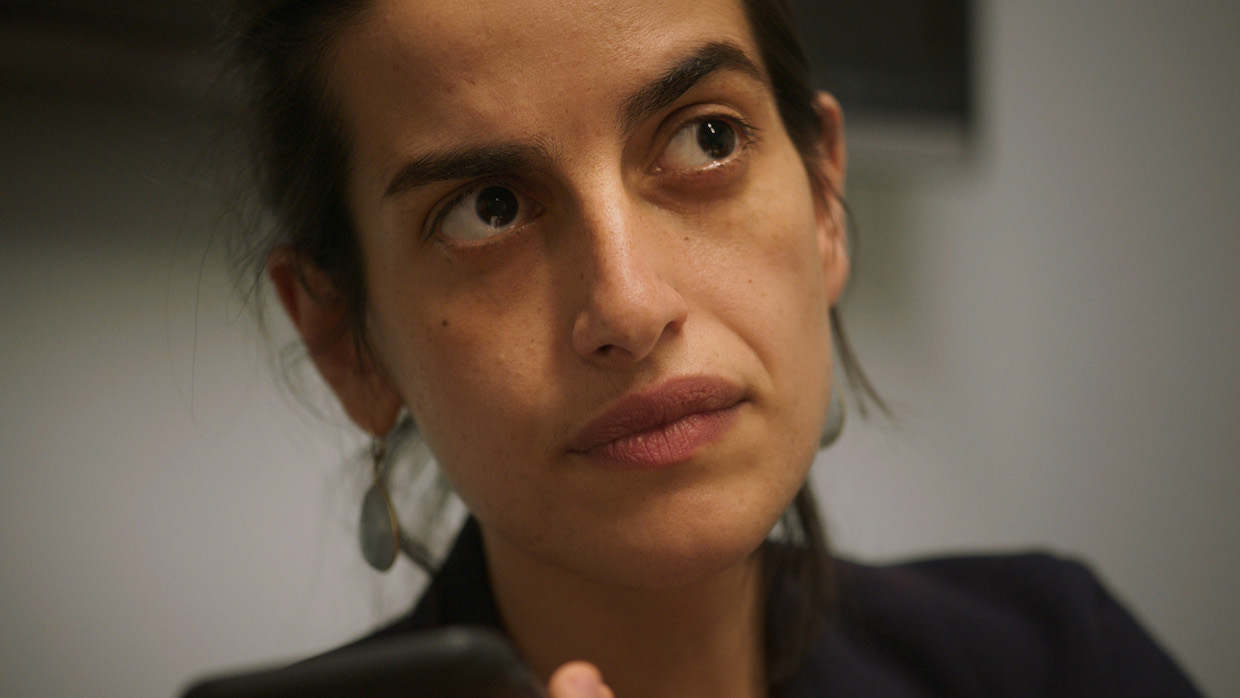 Back to selection
Back to selection
“I Had To Shoot This Film as a One-Person Crew”: DP Luke Lorentzen on A Still Small Voice
 A Still Small Voice, courtesy of Sundance Institute.
A Still Small Voice, courtesy of Sundance Institute. An aspiring chaplain named Mati navigates tragedy, grief and her own bandwidth for handling the incalculable loss of the pandemic in A Still Small Voice, the latest from documentary filmmaker Luke Lorentzen. Finishing her yearlong residency at the spiritual care department in New York City’s Mount Sinai Hospital, Lorentzen captures Mati and her supervisor Rev. David’s fight to maintain hope and warmth between 2020 and 2021, two of the deadliest years in U.S. history.
Lorentzen, who directed, shot and edited the film, discusses how his one-person shoot allowed him to blend into the doc’s setting—and gain the trust of subjects—more easily.
See all responses to our annual Sundance cinematographer interviews here.
Filmmaker: How and why did you wind up being the cinematographer of your film? What were the factors and attributes that led to your being hired for this job?
Lorentzen: Because of this film’s delicate subject matter (as well as COVID-19 restrictions within the hospital), I had to shoot this film as a one-person crew. Not having a team on-site meant juggling many things at once, but I was able to blend into the hospital and residency more easily, which I feel led to deeper levels of trust with the people I was filming. The shoot became a very personal process where the closeness of our relationships was not often held back by complicated technical needs.
Filmmaker: What were your artistic goals on this film, and how did you realize them? How did you want your cinematography to enhance the film’s storytelling and treatment of its characters?
Lorentzen: I wanted my cinematography to create a feeling of being present – close, connected, and right there with the chaplains and patients I filmed. I shied away from images that would draw attention to themselves and worked towards a very consistent and clean visual style. Every scene in the film was shot on a tripod and almost always at 45mm, f/2.6.
Filmmaker: Were there any specific influences on your cinematography, whether they be other films, or visual art, of photography, or something else?
Lorentzen: I was able to see an Alice Neel show at the Metropolitan Museum of Art just as I was beginning production, and her paintings had a big impact on me. Each portrait managed to reveal so much about the person depicted without any fancy tricks. Her deeply empathetic style was something I was in awe of at the time and carried with me through this shoot.
The Chambermaid, a film directed by Lila Aviles, was also inspiring for the ways in which it made a rather sterile hotel building feel cinematic and fascinating.
Filmmaker: What were the biggest challenges posed by production to those goals?
Lorentzen: It took many weeks to learn how to shoot around the masks that most people in the film were required to wear when in the hospital. Whenever possible, I tried to have both eyes of the person I was filming in the frame. Eyes became the main source of facial expression and personality that I was able to capture because profile shots felt unusually hard to read.
Filmmaker: What camera did you shoot on? Why did you choose the camera that you did? What lenses did you use?
Lorentzen: I shot this film on the Arri Amira with an Angenieux Optimo 28-76mm lens. From very early on, I knew this would be a film of faces, and I fell in love with how beautifully the Amira captured skin tones. The Amira delivered a deeply cinematic look that I feel matched the importance and significance of the conversations that I was filming.
Filmmaker: Describe your approach to lighting.
Lorentzen: I decided early on not to light any of the scenes in the film, but I would often play with available light sources in active ways – especially in the rooms that I was filming in regularly. For example, I would set window blinds consistently in the same places at certain times of day or mark a room’s light dimmer so that the space would look consistently lit from day to day. I came to love the gift of a conference room with a working dimmer.
Filmmaker: What was the most difficult scene to realize and why? And how did you do it?
Lorentzen: The group of residents would meet every Tuesday to discuss patient cases, and I had to cover these conversations – which were between five people – with a single camera. Getting proper coverage without moving around the room in a distracting or chaotic way was difficult. I came to learn the pace at which each resident spoke and got better over the course of the year at anticipating where to be and when.
Filmmaker: Finally, describe the finishing of the film. How much of your look was “baked in” versus realized in the DI?
Lorentzen: The film’s final look was very present in the original material but its colors came to life after working with the exceptional colorist Phaedra Robledo. We worked to preserve natural skin tones and an authentic feel of the hospital while bringing to life some of the brighter colors naturally in the material, such as nurses’ teal uniforms or the spiritual care department’s blue walls.
TECH BOX
Film Title: A Still Small Voice
Camera: Arri Amira
Lenses: Angenieux Optimo 28-76
Color Grading: Davinci Resolve with Phaedra Robledo
